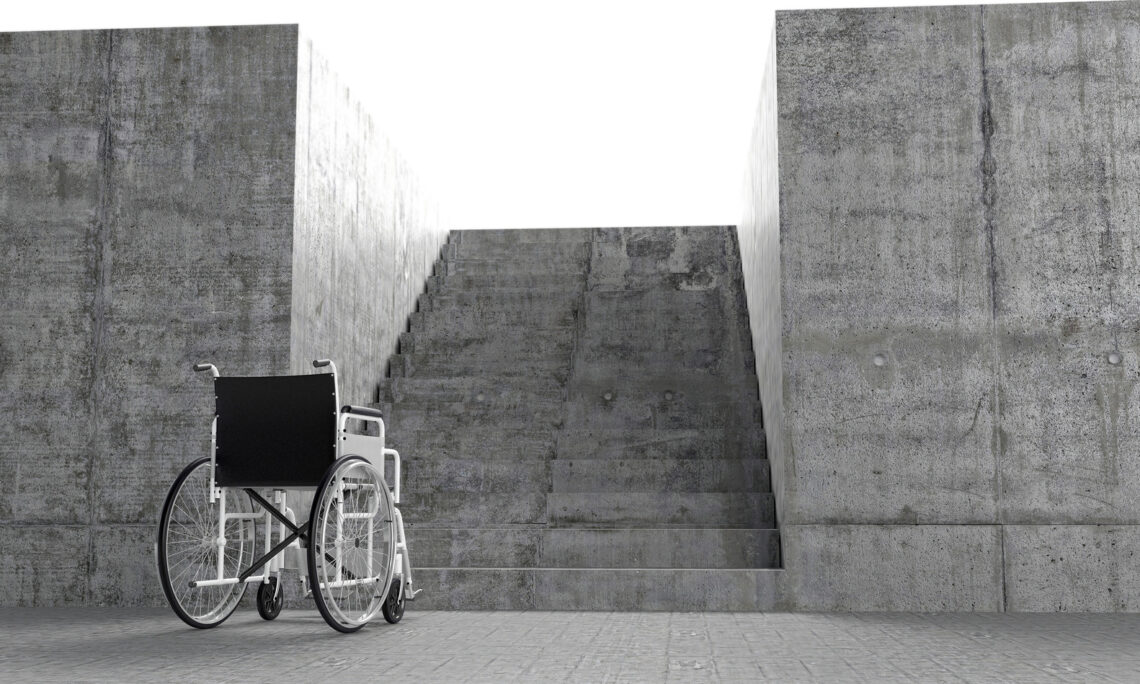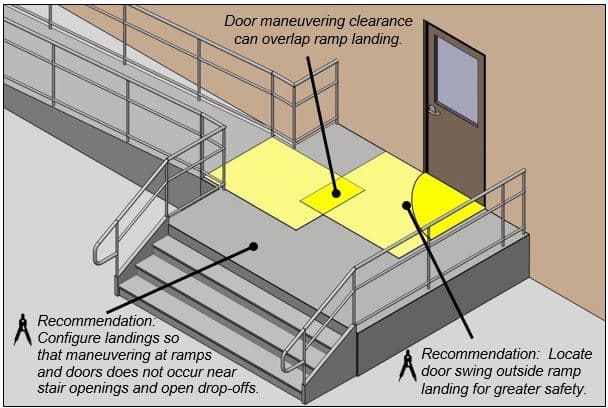Creating a space that’s accessible in all aspects is imperative for safe and sustainable living.
From the arrangement of rooms to the allocation of space and selection of suitable colors, a variety of factors need attention while designing a detailed and accessible structure. This is something which is also referred to as the creation of a universal design.
It meets the requirements of every individual, be it the old and young or abled and disabled, so that everyone can roam around freely and perform basic tasks without any assistance. But, it doesn’t just end here.
Numerous other crucial points determine accessibility in architecture, which architects and designers aren’t familiar with. This is because there are very few schools with full-time design studio faculty to help students understand the importance of the topic first-hand.
But you need not worry since we’ve got your back. We’re here with this informative guide to help every aspiring architect learn more about accessibility and the crucial role of the Americans with Disabilities Act (ADA) on architecture.
So, without further delay, let’s dive straight into its definition.
Definition Of Accessibility In Architecture

We’ll start by tackling the most critical question – what is accessibility in architecture? But before diving into a more in-depth answer, it makes sense to know more about the ADA, a civil’s rights law that forms the basis of this guide.
On that note, ADA or the Americans with Disabilities Act, was signed by President George H.W. Bush in 1990. It protects the rights of citizens with disabilities in almost all aspects of the public setting. Regardless of the disability, be it physical infirmities, psychological, or pre-existing health conditions, the law makes sure that every individual can afford accessibility in housing.
Ever since the enactment of ADA, all public areas have been following the guidelines defined by it. For instance, buildings and open spaces now feature a universal design with ample floor space, tables, and counters of varying heights, grab bars in toilets, and wider entryways.
These are a few examples, which will surely help you understand the true definition of accessibility. But if we’re to define the term in architecture, it refers to the capacity people have to access and inhabit a space, despite their cognitive and physical impairment.
To keep in line with the ADA and fulfill its requirements, architects are incorporating features in their designs to help individuals with mental and physical disabilities live or access spaces without restrictions.
However, the act is not only meant to tackle the problems faced by people in the field related to disability. It also helps those unable to pursue education, employment, and recreational opportunities because of environmental boundaries they’re being discriminated against.
In other words, the ultimate goal of architects is to ensure accessibility to all individuals by keeping in mind certain factors, including flexibility, lower physical effort, equitable and simple use.

Designing An Innovative, Universal & Accessible Space
While designing a universal and accessible space, architects need to be innovative, keeping the Americans with Disabilities Act Accessibility Guidelines (ADAAG) in mind. Plans of structures and public spaces should ensure safety for all, especially handicapped individuals.
This is one of the reasons why both residential and commercial areas are being designed with wider entryways and sufficient floor space to accommodate stationary wheelchairs. In fact, shelves and medicine cabinets are also placed at a height easily accessible by those seated in a wheelchair.
If you’re an architect or even a student, always keep yourself in the user’s shoes while designing your plan. Try to understand how a person with a disability will function in the space before you jump to anything conclusive.
Consider our example – by understanding that people with physical or mental disabilities use their appliance differently, depending on the circumstances, you’ll be able to design a 1:12 ramp according to their needs. You may think about decreasing its slope to help the user carry things with ease, or simply adapt to weather conditions.
That said, it’s important to note that over the years, the world has changed dramatically for the better. We can now purchase innovative wheelchairs that are designed in compliance with the ADA guidelines.
So, the law is no longer restrictive, and to be honest, it never was. The only limiting factor for an architect is his or her own imagination.
With that out of the way, the successful blend of creativity, innovation, and safety can only lead to the creation of an accessible space in compliance with the ADA regulations. This brings us to our next point…
Architectural Accessibility Enhances Creativity

Designing products and spaces for people with disabilities improve the creativity of the project. The lingering constraints sharpen focus, allowing you to look at the problem from a different perspective after considering the needs of others in your plan.
This eventually results in a universally beneficial and innovative design as you end up identifying deficits, which would have never been considered in the first place.
Today, we have architectural masterpieces built with a seamless combination of function, aesthetics, and flexible usability. One such architectural marvel is the Gallaudet University, the only liberal arts institution in the United States designed for the deaf and hard of hearing.
It was designed to enhance the learning experience without focusing on the use of hearing, human cognition, and emotion. Plus, it’s universally crafted to promote safety and well-being for one and all, giving importance to sensory reach, space, proximity, mobility, light, and color.
In-Depth View On The ADA
All being said, we yet again have to pave our way back to the critical role ADA plays in architecture. As you already know, the Americans with Disabilities Act is a civil right law that was passed to protect people with disabilities against discrimination. And making sure its guidelines are followed is the responsibility of us as architects and designers.
However, these guidelines are quite intricate for everyone to follow because not all structures are the same, and even the oldest buildings need to conform. Making things more complicated, individuals are allowed to file complaints through one of the two enforcement agencies if they’re discriminated against.

The Department of Justice (DOJ) or the Department of Transportation addresses these complaints via investigations. And if the allegations are found to be true, the case is forwarded to the federal court for further enforcement. Here’s where the problem lies.
With the process already being arduous, it gets easily bogged down with unnecessary and frivolous claims. In turn, legitimate claims end up waiting in the long cue, remaining unresolved for the longest duration.
If we go by the 2022 Census, California is the most populated state with 39 million residents. As a result of its vast population density, the state is the most ADA compliant. But this also means that it sees more ADA complaints and litigations each year than any other state in America.
In the first two quarters of 2022 itself, California was said to have recorded 2444 ADA Title III lawsuits, accounting for almost 44% of all the cases filed in the country. Truth be told, ADA litigation lawsuits are in no way affordable for businesses and establishments.
According to the Unruh Act, every citizen is to be rewarded $4000 in statutory damages if the claim is verified to be true. This, in turn, keeps both sides incentivized to ensure the ADA guidelines are given prime importance.
To make accessibility a possibility in compliance with the ADA laws, businesses and architects need to be driven with innovation and creativity. Apart from proper communication with clients, alignment of policies and timely training with staff is recommended for the purpose.
Certified Access Specialists
There’s no denying that ever since the ADA was signed in 1990, we have seen several revisions of the law along with consistent growth of population. As a result, this has led to an increase in the number of violations.
Seyfarth Shaw, a renowned firm that tracks the number of lawsuits filed due to the litigation of ADA, has reported a 12% growth in the number of cases when compared with the first six months of 2022 and 2022, respectively.
Of course, California has been leading in these complaints owing to the Unruh Act, another civil rights law that acts as an incentive for individuals to report complaints. It promises compensation for statutory damages without even having to provide evidence for the specified claim.
What about businesses and establishments? Well, to protect themselves against lawsuits, these professionals can seek assistance and expertise from Certified Access Specialists (CASp). They conduct timely inspections of the space to check for ADA compliance.
How does this help? If you undergo a CASp inspection, you’ll be granted “Qualified Defendant” status in case a construction-related complaint is filed against your structure. In other words, CASp will file a report to declare its findings, which in turn, will allow you to stand in court.

Guidelines For Accessibility
Accessibility is a topic of importance in the architectural industry, which deals with the creation of spaces of accommodation in line with the ADA regulations. In order to design a structure or building that’s both safe and accessible, there are a few crucial points to keep in mind.
This brings us to another important section of this guide. Here we’ll be taking you through an in-depth analysis of the factors that need attention while designing a space.
- Size, Function, & Location
When you’re designing a space, be it for commercial or residential use, federal, state, and local laws can affect your plan. For example, suppose you have to include an elevator in an old two-story building. There’s no need to rush; take your time to understand the size, function, location, and type of construction.
An elevator is generally not required in a two-story building, featuring a compact footprint. However, you’ll need to consider making it accessible, especially if it contains retail spaces, medical facilities, or public agencies.
- Flexibility In Use

Without a doubt, designing a space for people with disabilities adds a layer of complexity for architects and designers. It’s obvious that the building or area will not just be used by those with cognitive and physical impairments. Therefore, virtual construction becomes a complicated jigsaw puzzle that requires constant alignment to meet the needs of every user.
You’ll need to create a universal design to promote flexible, simple, and equitable use for every citizen of America for that matter. Providing full-length mirrors that can be viewed by all, including children, mounting low bathroom sinks for better reach, and avoiding shag carpets are just a few of the many ways you can achieve this goal.
- Permits For Occupancy Doesn’t Necessarily Mean ADA Compliance
There’s often a misconception surrounding the notion of permits and certificates of occupancy. It’s a harsh reality that a single agency can’t approve your project across federal, state, and local levels. So, there’s no way to determine if your structure is compliant with the ADA regulations.
All you can do is research and communicate well with your client to understand his or her needs as it’s ultimately their responsibility to assure ADA and access the space.
Final Words
Most architectural students, professionals, and teachers fail to understand the impact of the ADA on accessible architecture. This is because they often forget to place themselves in the position of users with disabilities while creating a design.
The failure to meet the set regulations of the civil rights law proves to be a limiting factor for businesses and establishments, resulting in expensive lawsuits. Other than opting for inspection by specialized agencies, there’s no way to prove ADA compliance beforehand.
However, it does allow you to file a report in court, giving you a chance to present your case. On that note, we now come to the end of our comprehensive and informative guide. Here’s hoping you were able to gain the required insight on the topic.
With this, we’ll take your leave. Till next time!

Related Articles
How To Design for Senior Citizens – Ideas for Elder-Friendly Design
How Architecture of Today is Creating Better Bathrooms for Everyone


